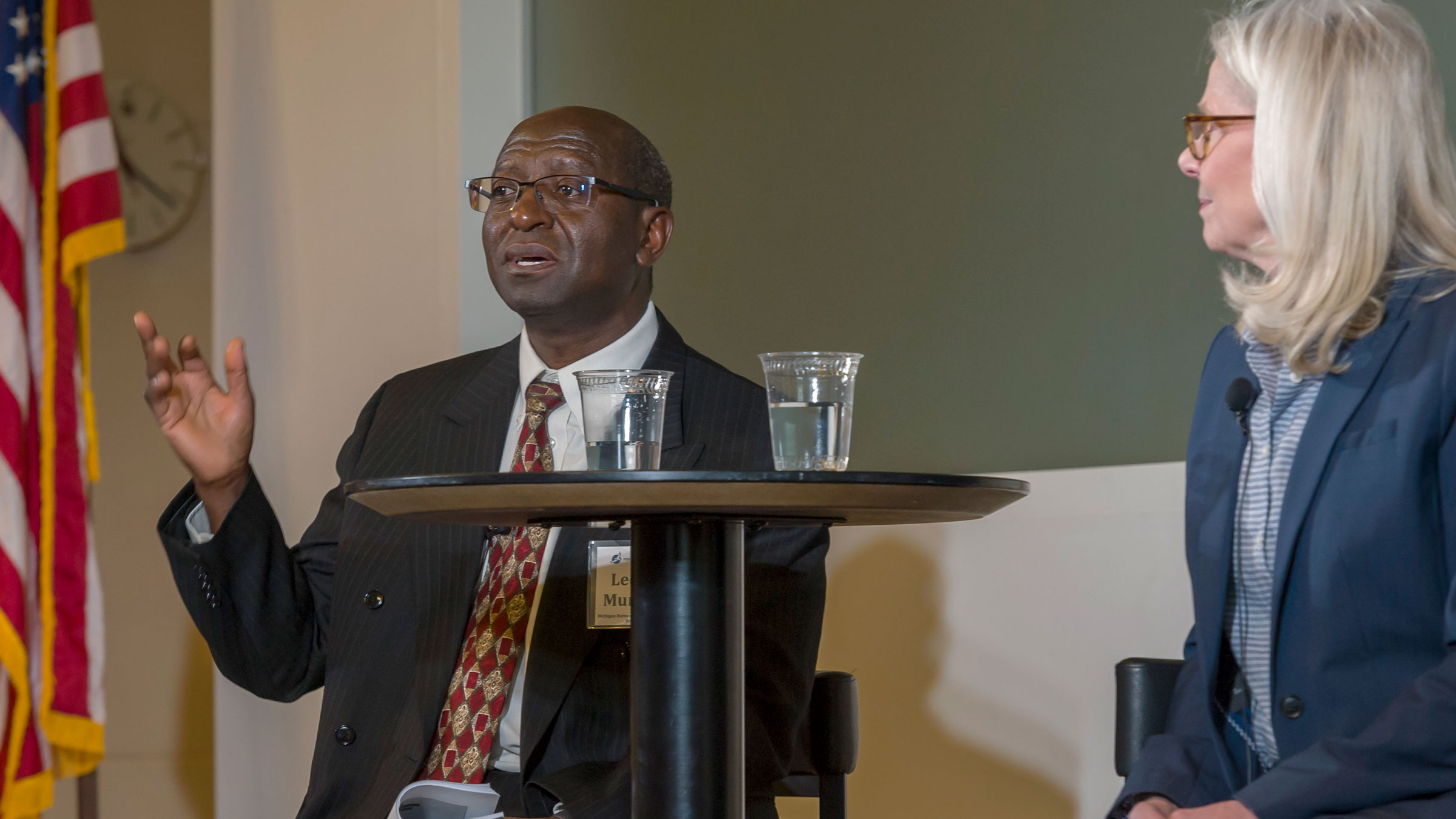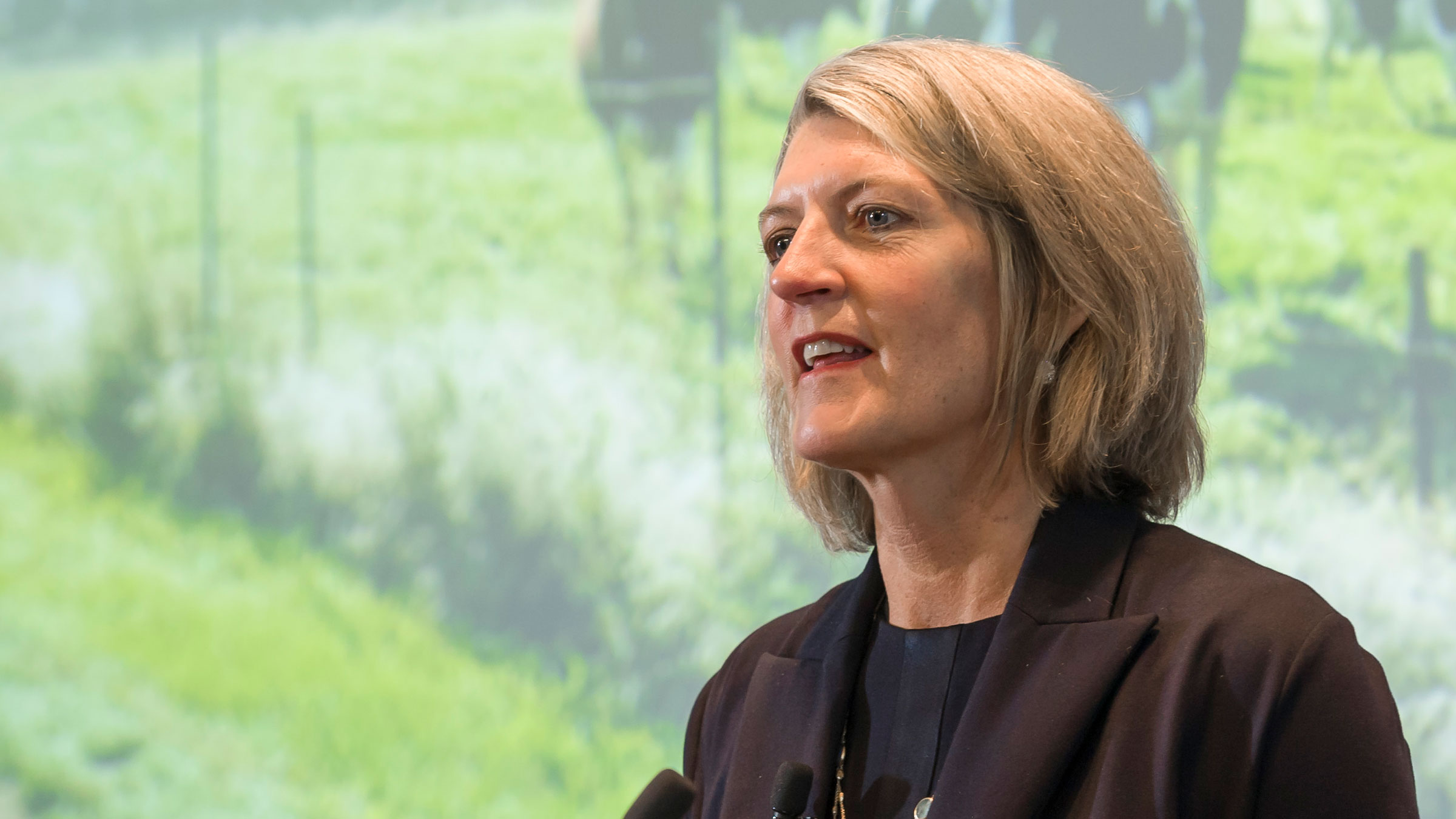Worker shortages dominated reports from state experts during the Minneapolis Fed’s annual Regional Economic Conditions Conference on Jan. 9, 2020.
Speaking to the gathering of policymakers, industry experts, and journalists, Montana Department of Labor and Industry Chief Economist Barb Wagner said: “We are seeing some signs that the labor shortage is slowing our employment growth and possibly our economic growth as well.”
That underscored the concerns of most of the other economists from the Ninth Federal Reserve District’s five other states.
You can view videos and slides of all of the conference’s presentations here.
What follows are snapshots of the economic conditions in each Ninth District state.
Minnesota
- The state used to add an average of 40,000 workers a year until the baby boomers began to retire in the early 2000s, said Department of Employment and Economic Development Research Economist Steve Hine. Since then, it’s added only 15,000 workers a year, and most of those from a dwindling supply of foreign-born Minnesotans, meaning that without them the state would have added just 5,000 workers per year.
Montana
- Its unemployment rate at 3.4 percent remains below the U.S. average.
- Wages are rising, but businesses are creating fewer jobs for lack of workers.
- Many parts of the state have been left out as unemployment tends to be higher and job creation lower in areas reliant on agriculture, which suffered in the trade war with China, and coal mining, which has been hit by its coastal customers’ turn away from coal power.
- Economic diversification seems to be working, said Wagner, with the growth of tech and health care sectors: “Montana is transitioning to a more knowledge-based economy versus a more industrial and agricultural economy,” she said.
North Dakota
- There are currently 15,000 job openings—with nearly 3.5 openings for every active résumé—according to Nancy Hodur, a senior researcher at North Dakota State University.
- The oil boom of the past decade flooded North Dakota with not just oil money but also young workers and their families, with the state population, once older than the U.S. average, now younger.
- Since 2016, the state’s population growth has come primarily from residents having more children, rather than in-migration.
- Still, the oil boom has not changed the state’s dependence on commodities, which led to a serious budget crunch in the mid-2010s when the price of both oil and crops collapsed, thus adversely affecting rural counties and residents.
South Dakota
- The number of jobs in South Dakota grew in 2019 at the fastest rate since at least 2010, said State Economist Mark Quasney.
- Unemployment, traditionally lower than in other states, slipped lower still, below 3 percent as wages grew 2.6 percent on average.
- Troubles in the ag sector in 2017 caused the state economy to shrink for the first and only time in the past decade, but state forecasts show the strongest job growth in professional services, health care, and management.
- Hoping its reputation for low regulations and low taxes will attract new businesses and new residents, Quasney said: “We’re just constantly looking to our surrounding states—sorry, everybody—to try and attract people.”
Upper Peninsula of Michigan
- A picture of quiet decline in the Upper Peninsula was painted by Leonidas Murembya, an economist with the state Department of Technology, Management, and Budget.
- Already sparsely populated, the U.P.’s population has been falling since 1975 and will likely keep falling for years to come as young people leave.
- The number of workers and the number of jobs available have both shrunk since the Great Recession, but the number of workers has shrunk faster, bringing the unemployment rate down to a still high 6 percent.
- More than half of major industries in the UP—even health care—are still losing jobs, and projections show job growth is likely to be flat at best.
Wisconsin
- Manufacturing’s share of Wisconsin’s work force is more important to the state, including counties located in the Ninth District, than to neighbors such as Minnesota and the United States as a whole, according to Taggert Brooks, chairman of the Economics Department at the University of Wisconsin-La Crosse.
- Though there have been reports that manufacturing jobs are declining at a steep enough rate to suggest a recession, Brooks said it’s too soon to say. Employment figures reported by news media are based on surveys, and the actual counts, which occur less frequently, have tended to be higher.
- Still, if past trends hold, Wisconsin manufacturing might be experiencing “a softening but not necessarily a decline.”
Related Article
A different kind of labor shortage
For Land O’ Lakes and all of ag, it’s about older and fewer farmers, and rural decline.
Tu-Uyen Tran is the senior writer in the Minneapolis Fed’s Public Affairs department. He specializes in deeply reported, data-driven articles. Before joining the Bank in 2018, Tu-Uyen was an editor and reporter in Fargo, Grand Forks, and Seattle.






